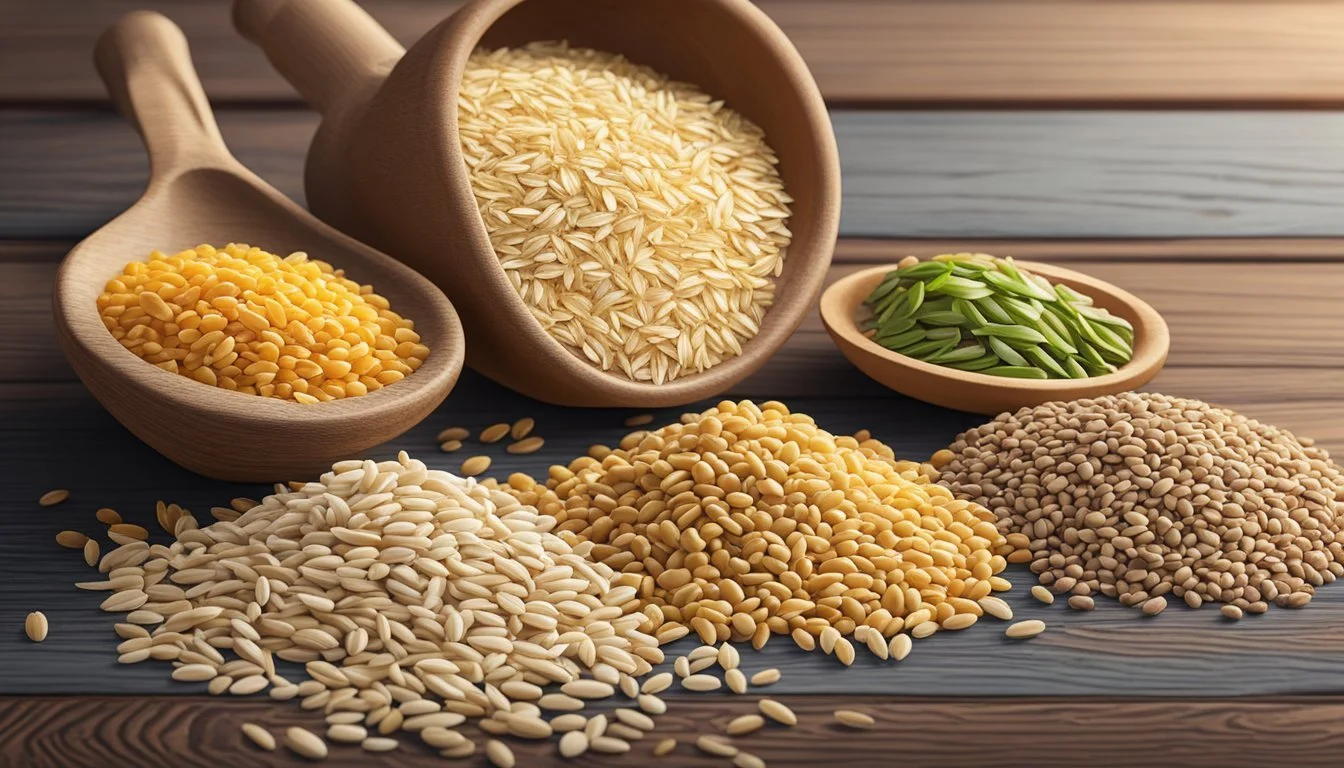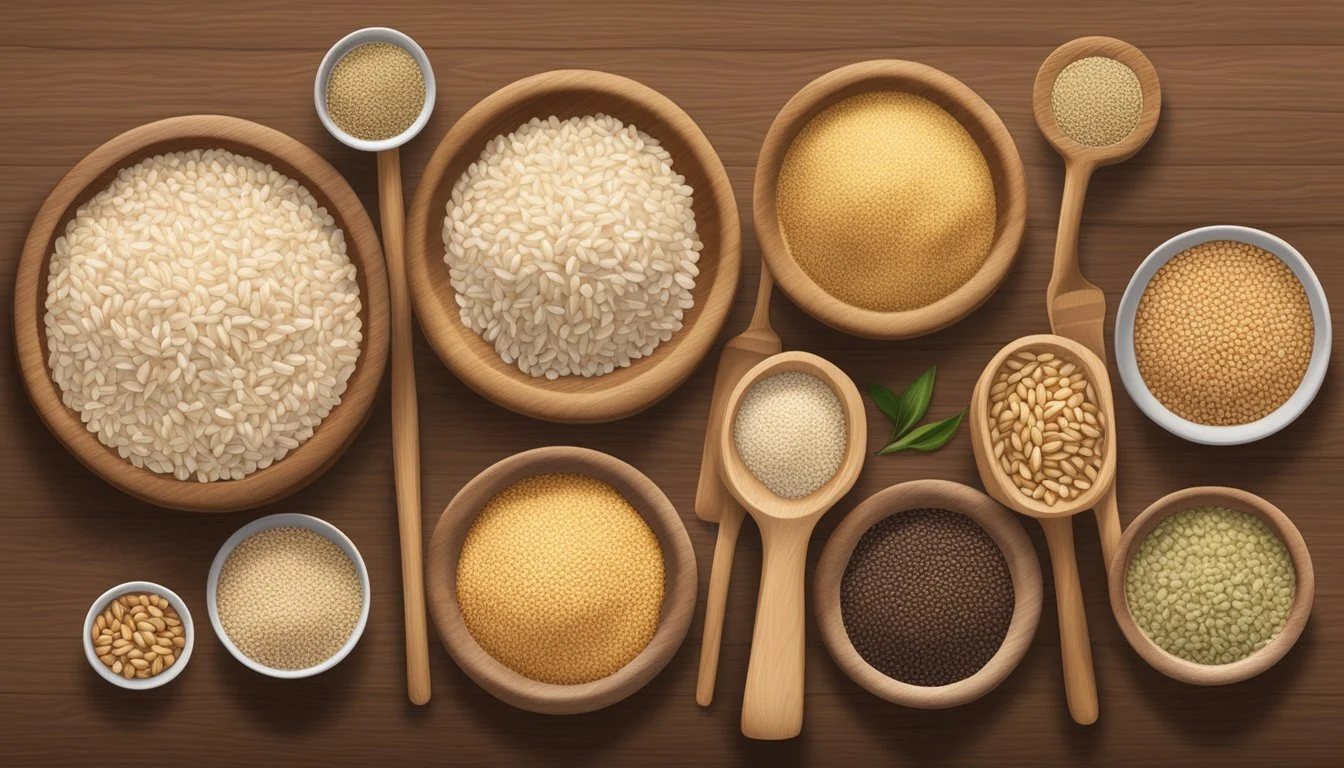Hulled Barley Substitutes
Top Alternatives for a Nutritious Diet
Finding a substitute for hulled barley, a versatile and nourishing whole grain, is essential for those seeking to diversify their diet or accommodate dietary restrictions. One excellent substitute is farro, known for its nutty flavor and chewy texture, making it an interchangeable option in recipes. Whether you're making soups, salads, or hearty casseroles, farro can seamlessly replace hulled barley.
Buckwheat is another great alternative, especially for those looking for gluten-free options. This grain provides a soft and chewy texture and works well in a variety of dishes such as bread, pancakes, and stews. Buckwheat's versatility and compatibility with a range of recipes make it a reliable substitute for hulled barley.
For those looking to explore different textures, wild rice can offer a unique twist. With its long, slender grains and slightly nutty flavor, it adds a delightful chewiness to pilafs, soups, and mixed grain dishes. Wild rice not only stands out visually but also brings an interesting taste profile that can enhance your culinary creations in place of hulled barley.
Understanding Hulled Barley
Hulled barley is a nutritious grain that retains its outer bran layer, providing a wealth of vitamins, minerals, and fiber. It is versatile in the kitchen and offers several health benefits, particularly related to heart health and weight management.
Nutritional Profile
Hulled barley is packed with essential nutrients. It contains significant amounts of fiber, protein, and vitamins such as B vitamins. The grain also boasts important minerals like iron, magnesium, selenium, manganese, phosphorus, and zinc. Each serving delivers a balanced mix of amino acids which help support muscle function. The high fiber content promotes digestive health and aids in maintaining a healthy weight by providing a feeling of fullness.
Culinary Uses
In the kitchen, hulled barley's nutty flavor and chewy texture make it a versatile ingredient. It works well in soups and stews, adding a hearty texture. It can be used in place of rice in risotto or salads for a boost of nutrients. There are various recipes that feature hulled barley, from breakfast porridges to savory side dishes. Its ability to absorb flavors from ingredients makes it suitable for diverse culinary applications.
Health Benefits
Hulled barley provides several health benefits. The high fiber content helps to lower blood cholesterol levels, reducing the risk of heart disease. It has a low glycemic index, which assists in managing blood sugar levels, making it suitable for those with diabetes. The grain's antioxidants combat free radicals, promoting overall health. The combination of fiber, protein, and complex carbohydrates also supports sustained energy levels and manages weight effectively. Furthermore, essential minerals like calcium contribute to bone health.
Barley Substitutes
When seeking substitutes for hulled barley, several options are available that cater to different dietary needs and preferences, including gluten-free alternatives, whole grain choices, and refined grain options.
Gluten-Free Alternatives
For individuals with celiac disease or gluten allergies, finding suitable barley substitutes is essential. Quinoa is a popular choice due to its high protein content and versatile use in salads, soups, and grain bowls. It cooks quickly and has a mild flavor.
Buckwheat is another excellent gluten-free grain. Despite its name, it is not related to wheat and offers a nutty taste suitable for stews, pancakes, and bread.
Millet and Amaranth also provide valuable nutrients and diverse usage options in various dishes.
Gluten-Free Grain Notes Quinoa High protein, mild flavor Buckwheat Nutty taste, versatile Millet Rich in nutrients Amaranth Hardy and nutrient-dense
Whole Grain Options
Those looking to maintain a whole-grain diet can explore grains that offer similar textures and flavors to barley. Farro is a favorite, particularly in Mediterranean dishes. This ancient grain provides a chewy texture and nutty flavor.
Oats are another easily accessible option that works well in baked goods and casseroles.
Freekeh and Spelt are also worth considering for their robust flavors and high fiber content. Whole grains like these are rich in essential nutrients and provide a healthy alternative to barley.
Refined Grain Choices
Refined grains, while less nutrient-dense, can serve as convenient substitutes for barley in many recipes. Couscous, made from semolina, is a staple in North African cuisine and offers a light, fluffy texture.
Orzo, a rice-shaped pasta, can be used to replace barley in soups and salads, mimicking its consistency while providing a familiar taste.
White Rice is another straightforward substitute, versatile and quick to cook, though it lacks the same nutritional profile as whole grains. Bulgur Wheat, partially pre-cooked, also makes for a quick-cooking substitute with a unique texture.
Considerations for Dietary Restrictions
When choosing substitutes for hulled barley, it's essential to consider dietary restrictions such as gluten sensitivity and the need for low glycemic index foods. This section covers non-gluten alternatives and options with a low glycemic index.
Non-Gluten Alternatives
For individuals with celiac disease or gluten sensitivity, finding gluten-free substitutes is crucial. Quinoa stands out as a versatile option. It is not only gluten-free but also a complete protein, providing all nine essential amino acids. Buckwheat is another excellent choice; despite its name, it is not related to wheat and is safe for gluten-free diets. Corn is also viable, especially in forms like polenta or cornmeal, which can mimic some of barley's texture. These alternatives are ideal for recipes where texture and nutrition are important.
Low Glycemic Index Foods
For those focused on managing blood sugar levels, selecting low glycemic index (GI) foods is important. Foods with a low GI cause a slower rise in blood glucose levels. Quinoa and buckwheat not only serve as gluten-free options but also have a relatively low glycemic index. Lentils and wild rice are also recommended; they offer a chewy texture similar to barley while keeping blood sugar levels stable. These substitutes are beneficial for individuals monitoring their carbohydrate intake and seeking to maintain balanced energy levels throughout the day.
Preparing Substitutes in Dishes
When preparing hulled barley substitutes in various dishes, attention to cooking techniques and times is crucial to achieve the desired texture and flavor. Different substitutes, such as farro and buckwheat, offer unique qualities that can enhance recipes like risottos, stews, and pilafs.
Cooking Techniques and Times
To replicate the chewy texture of hulled barley, consider the following:
Farro should be rinsed and then boiled for 20-30 minutes until al dente.
Buckwheat cooks more quickly, typically in 10-15 minutes, and can be used in soups and stews.
Wild Rice needs to be simmered for 45 minutes to an hour to take on its characteristic earthy flavor and texture.
When making risotto, farro and buckwheat can substitute for barley. Farro, with its nutty flavor, works well in savory dishes. For casseroles, ensure the grain is partially cooked before combining with other ingredients to match the cooking time of the recipe.
Flavor Pairings and Textures
Choosing the right substitute involves matching flavors and textures:
Farro offers a nutty and slightly chewy texture, making it ideal for pilafs and hearty stews.
Buckwheat brings a mild earthy flavor, suitable for stews, soups, and even pancakes.
Cauliflower rice adds a low-carb, gluten-free option. Though it doesn't replicate barley's exact texture, its mildness and ability to soak up flavors make it versatile in pilafs and stir-fries.
For baked goods, using oat flour or buckwheat flour can add the necessary structure and nutty taste. These substitutes ensure that the dish retains moisture and a hearty feel, essential for cookies, bars, and breads.
Additional Tips and Insights
Proper storage ensures longer shelf life and better nutrient retention during cooking for hulled barley substitutes. These tips will help you make the most out of your substitutes while maintaining their wholesome benefits.
Storing and Shelf Life
Proper storage extends the shelf life of barley substitutes, maintaining their quality. Store grains like quinoa, brown rice, and buckwheat in airtight containers in a cool, dry place. This keeps them fresh for several months.
For longer storage, refrigerate or freeze grains. Oat and almond flour should be stored in the refrigerator to prevent rancidity. Always check the best-by dates and label containers with purchase dates to avoid using expired products.
Cauliflower rice and other perishable substitutes should be used within a week or kept in the freezer to extend their life. Following these storage tips helps maintain the freshness and nutritional value of your barley substitutes.
Nutrient Retention in Cooking
Maintaining nutrients during cooking is essential. Quinoa, for example, retains its protein and fiber content better when rinsed before cooking to remove saponins. Using a gentle simmer rather than high heat helps prevent nutrient loss.
Wild rice requires a longer cooking time but retains its nutrient profile when cooked properly. Opt for steaming or boiling instead of frying to preserve vitamins and minerals. Cook with minimal water to reduce nutrient leaching.
For low-carb options like cauliflower rice, steaming rather than boiling can prevent nutrient loss. Avoid overcooking to preserve its vitamins and minerals. Applying these cooking tips ensures that your barley substitutes remain nutritious and beneficial.





